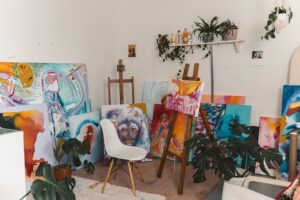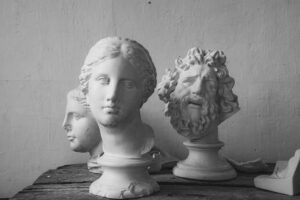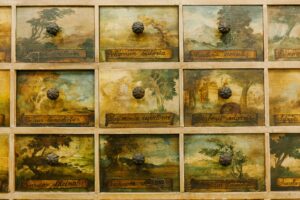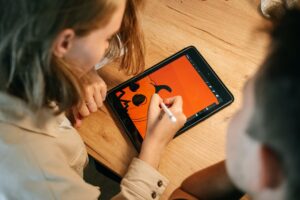Are you ready to take your drawing skills to the next level? Whether you’re an aspiring artist, a hobbyist, or just looking for a new way to express yourself creatively, mastering the art of drawing can be immensely rewarding. But where do you begin? In this post, we’ll explore some essential techniques and exercises that will help you improve your skills and unleash your inner artist. From understanding perspective and proportion to developing your own unique style, let’s dive into the world of drawing together!
What is drawing?
Drawing is the art of making marks on a surface using a pencil, pen, charcoal, or other drawing implements. It is one of the oldest and most fundamental forms of visual expression. The act of drawing can be both simple and complex, depending on the level of skill and experience of the artist.
At its simplest, drawing is a way to communicate an idea or feeling. A child might draw a picture of a house to show their family where they live. An adult might draw a sketch of a proposed building to show their client how it will look. Drawing can also be used to record what we see around us, whether that’s the people in our lives, the natural world, or the objects in our environment.
More complex drawings can be created by adding shading and texture to create the illusion of three-dimensional form. This can be done with pencils, pens, charcoal, or other drawing implements. With practice, anyone can learn to draw realistically.
Whether you’re just starting out or you’ve been drawing for years, there are always new techniques and exercises you can try to improve your skills. In this blog article, we’ll share some tips on how to get started with drawing, as well as some easy exercises that will help you take your skills to the next level.
The different types of drawing
Whether you’re a beginner or an experienced artist, there are many different types of drawings you can explore. Each type of drawing has its own unique benefits and can help improve your skills in different ways.
One of the most popular types of drawing is still life drawing. This involves drawing objects that don’t move, such as fruit, flowers, or inanimate objects. Still life drawing is a great way to practice your observation skills and learn how to draw different textures and tones.
Another popular type of drawing is portraiture. This involves drawing people, either from real life or from photographs. Portraiture is a great way to practice capturing facial expressions and body language. It can also be very challenging, as you have to capture the essence of a person in your drawing.
Landscape drawing is another type of drawing that can be very rewarding. This involves drawings scenes from nature, such as mountains, forests, rivers, and more. Landscape drawings can be very detailed and complex, but they can also be quite simple. Regardless, they’re a great way to Practice your skills with perspective and scale.
Finally, abstract drawing is a type of drawing that doesn’t necessarily have any recognizable subject matter. This can be a great way to let your creativity flow and experiment with different shapes, colors, and textures. Abstract drawings can be very freeing and allow you to explore new ideas without being constrained by reality.
Why drawing is important
Drawing is a fundamental skill that can be used in a variety of ways. It can be used for sketching out ideas, for creating finished artwork, or simply for enjoyment. Drawing is also a great way to relax and de-stress.
There are many reasons why drawing is important. It helps to develop hand-eye coordination, fine motor skills, and problem solving skills. Drawing also allows us to communicate our ideas visually, and to express our creativity.
Whether you’re a beginner or an experienced artist, there are always new things to learn about drawing. So don’t be afraid to pick up a pencil and give it a try!
How to improve your drawing skills
If you’re not happy with your drawing skills, there are a number of things you can do to improve. First, take a look at your work and identify areas that need improvement. Then, find some resources that can help you learn new techniques and brush up on the basics. Finally, practice as often as you can to make progress.
There’s no magic formula for becoming a better artist, but these tips can help you get started:
1. Take a close look at your work. What elements need improvement? Work on those areas specifically.
2. Find resources that can help you learn new techniques or brush up on the basics. There are plenty of books, websites, and online tutorials available. Do some research and find ones that fit your learning style and interests.
3. Practice regularly. The more you draw, the better you’ll become. Set aside some time each day (or week) to work on your skills. Even if it’s just for 15 minutes, it’ll make a difference over time.
4. Get feedback from others. Ask friends or family members for their honest opinion about your drawings. If possible, find a mentor or professional artist who can offer constructive criticism.
Drawing techniques

When it comes to drawing, there is no one right way to do it. However, there are some basic techniques that can help you get started and improve your skills.
One of the most important things to keep in mind when drawing is proportion. This means making sure that the objects in your drawing are relative to each other in size. You can use a ruler or measure the objects with your eye to make sure they are proportional.
Another important technique is perspective. This is especially important when drawing buildings or landscapes. Perspective helps create the illusion of depth and distance on a two-dimensional surface. To create perspective, you need to draw lines that converge toward a point on the horizon.
If you want your drawings to have more dimension and volume, shading is an essential technique to learn. When shading, it’s important to use different values (the lightness or darkness of a color) to create the illusion of form. Shadows can also be used to create depth and volume.
These are just a few of the many techniques that can help you improve your drawing skills. Experiment with different techniques and see which ones work best for you.
Drawing exercises
Assuming you want tips for improve your drawing skills:
1. Start with basic shapes. When first starting to draw, stick to simple shapes like squares, rectangles, triangles, and circles. These basic shapes will help you build up your confidence as you move on to more complex drawings. As you get better at drawing, you can start adding more detail to your shapes.
2. Practice often. The more you practice, the better you’ll become at drawing. Set aside some time each day to work on your drawing skills. Even if it’s just for a few minutes, those minutes will add up and make a big difference in your ability to draw.
3. Use reference materials. When working on a new drawing, it can be helpful to use reference materials such as photos or images from magazines or books. This will help you get a better idea of how to create the image you have in mind. Just be sure not to rely too heavily on references – part of the challenge of drawing is coming up with the image yourself!
4. Experiment with different mediums. In addition to pencil and paper, there are lots of other mediums you can experiment with such as charcoal, pastels, or even painting. Trying out different mediums is a great way to find the one that best suits your needs and preferences.
5. Join a class or workshop. If you’re serious about wanting to improve your drawing.
Conclusion
Drawing is a skill that can be developed through practice, patience and dedication. With the right techniques and exercises, you can improve your skills and become an expert artist in no time! Whether you are just starting out or have been drawing for years, these tips will help you reach your goals. Take it slow and don’t forget to enjoy the journey – with consistent practice, soon enough you will find yourself having mastered the art of drawing.








